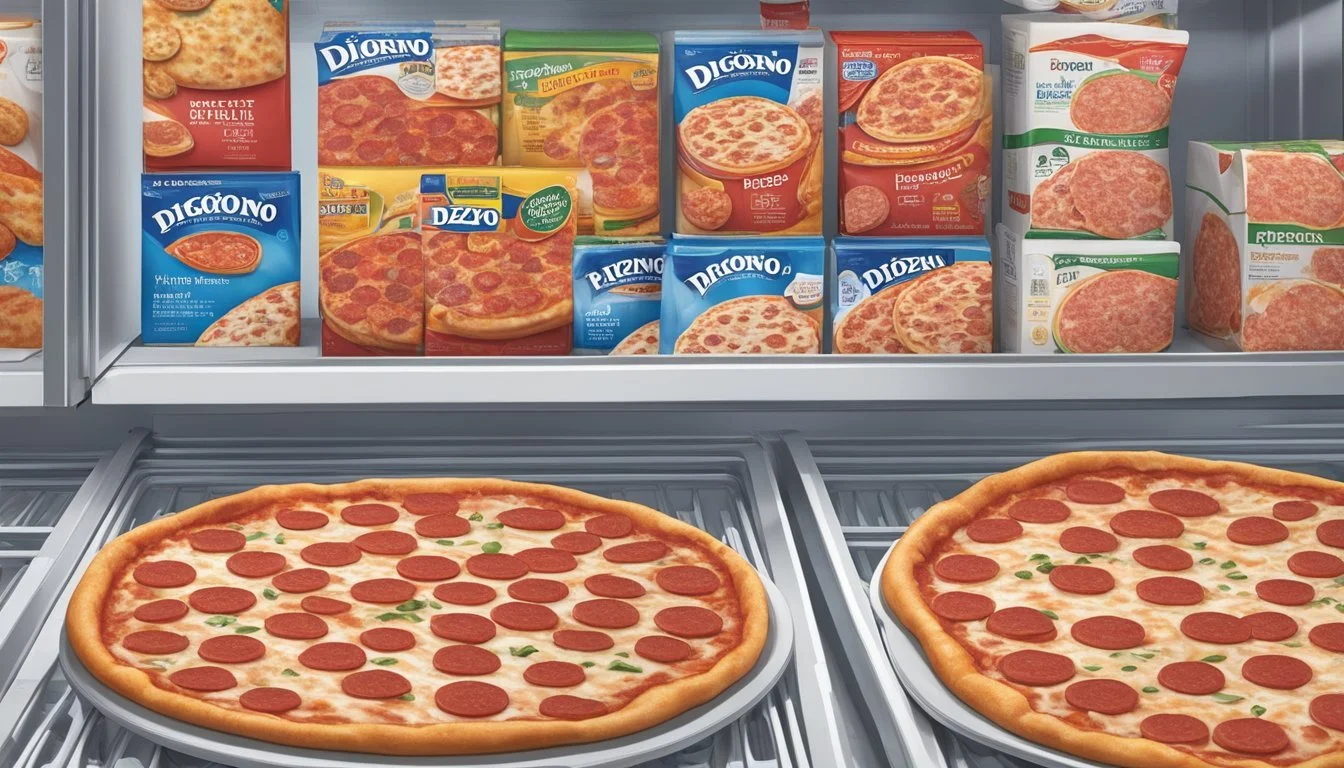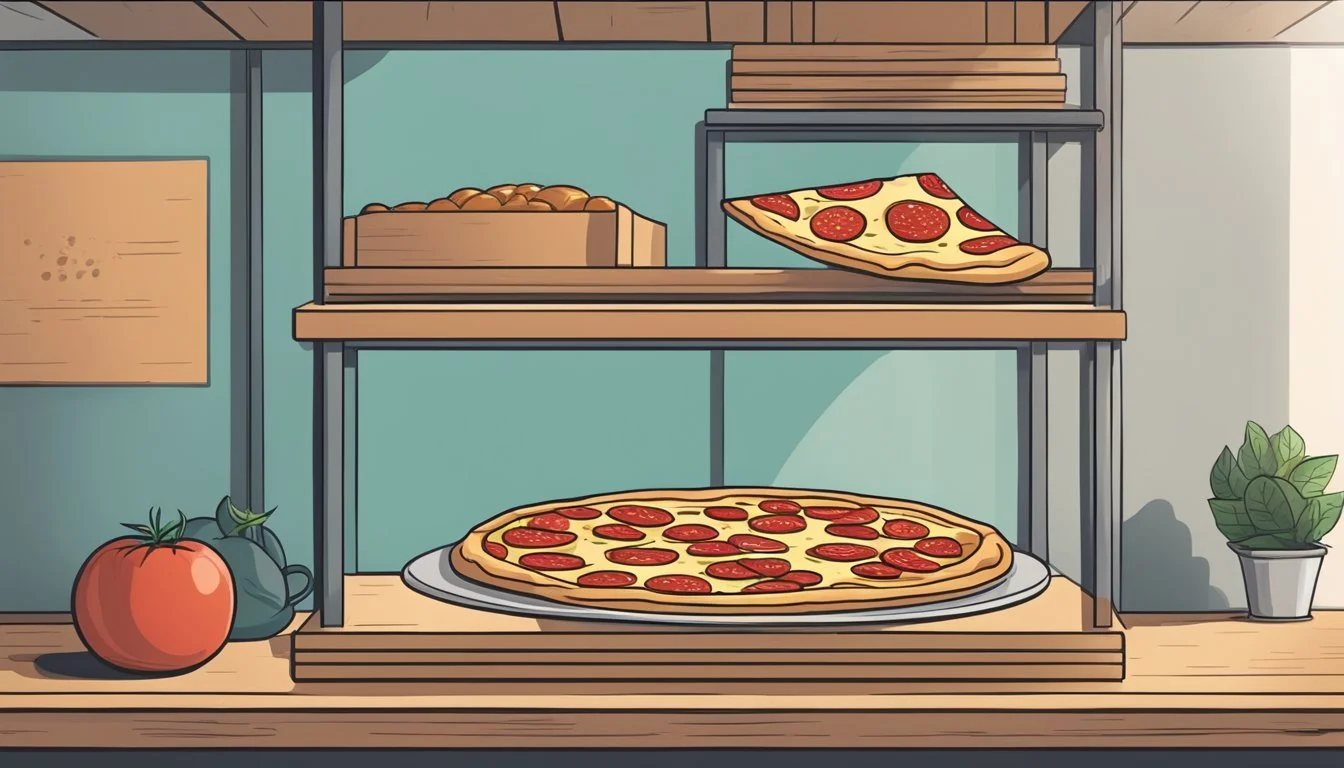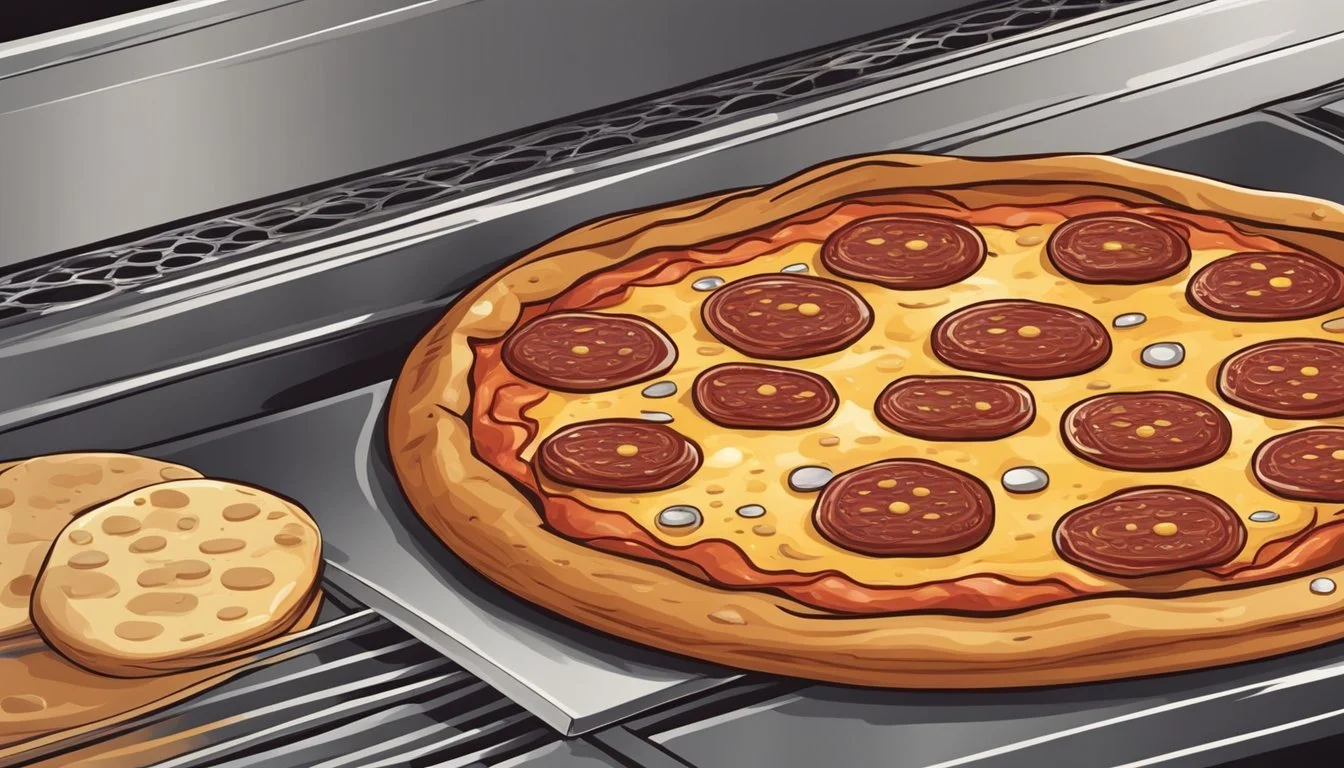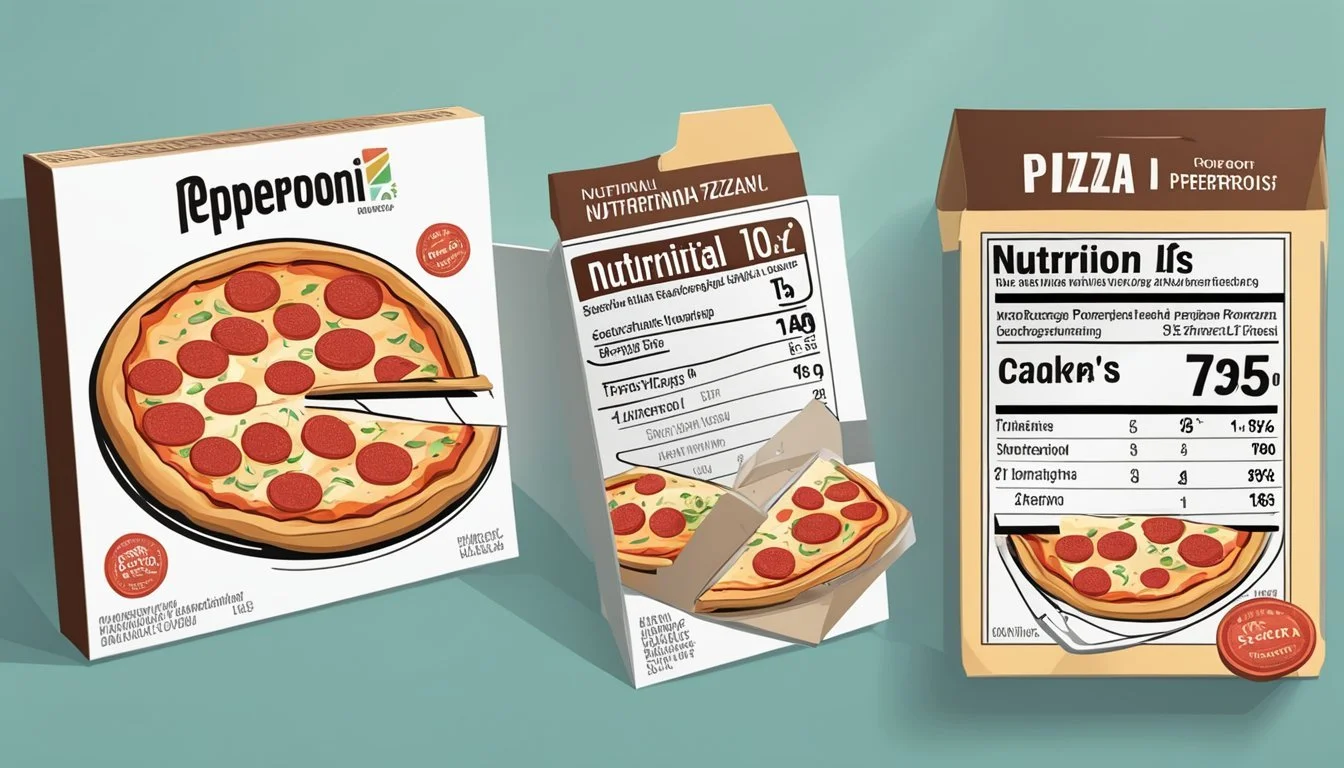How Long Does Digiorno Pepperoni Pizza Last?
Tips for Storage and Freshness
Digiorno Pepperoni Pizza is a popular choice for many pizza lovers, offering a quick and easy meal. The key concern often surrounds how long this convenience lasts, particularly in terms of shelf life. Digiorno Pepperoni Pizza typically retains its quality for about six and a half months when stored properly in the freezer.
Understanding the longevity of frozen pizza can be crucial for meal planning. Many customers trust Digiorno for its consistent taste and convenient preparation time. Knowing the shelf life ensures you're enjoying the freshest product possible, which maintains its intended flavor and texture.
Proper storage in the freezer plays a vital role in maintaining the pizza's quality. Consumers often overlook expiration dates, risking diminished taste or safety. Being aware of these timelines helps prevent waste and maximizes the value of your food purchases.
Understanding Frozen Pizza
Frozen pizza serves as a convenient and tasty option for many households. The composition and variety of DiGiorno pizzas contribute to their popularity.
Composition and Ingredients
Frozen pizzas usually include a base of dough, a layer of sauce, and a combination of cheese and toppings. DiGiorno pepperoni pizza features ingredients such as mozzarella, tomato sauce, and sliced pepperoni.
The crust is available in different styles including rising crust, stuffed crust, and thin crust. The cheese is often a blend of mozzarella and other varieties. The precise ingredients can vary depending on the type of Digiorno pizza and its flavor.
Types of Digiorno Pizzas
DiGiorno offers a diverse range of options. They include rising crust pizzas, known for their soft, chewy texture. Stuffed crust pizzas have mozzarella inside the crust, offering a unique twist.
Thin crust pizzas provide a crispier experience. Personal pizzas cater to individual servings and come in various flavors. The pepperoni pizzas are particularly popular, but there are also combinations like supreme and four cheese.
Storage Guidelines
DiGiorno pepperoni pizza's storage and preservation are vital to maintaining its quality and safety. Proper storage methods vary for freezing and refrigerating leftovers.
Freezer Storage
Frozen Storage Tips:
Always keep DiGiorno pepperoni pizza in its original packaging.
Ensure your freezer is set to the appropriate temperature of 0°F (-18°C) or below.
If the package is damaged, transfer the pizza to a freezer-safe, airtight container to avoid freezer burn.
Freezing Guidelines:
Unopened pizza can remain frozen for up to 18 months.
Once opened, it's best to consume within a month to maintain optimum taste.
Label the pizza with a date if re-packaging to keep track of its shelf life.
Refrigeration and Food Safety
Refrigeration Tips:
Store leftover cooked DiGiorno pizza in the refrigerator within 2 hours after baking.
Use an airtight container or tightly wrap the pizza with aluminum foil or plastic wrap.
Food Safety Guidelines:
Keep the refrigerator temperature at 40°F (4°C) or below to prevent bacterial growth.
Consume refrigerated leftovers within 3-4 days for the best quality and safety.
When reheating, ensure the pizza reaches an internal temperature of 165°F (74°C) to reduce the risk of foodborne illnesses.
By following these storage guidelines, one can enjoy their DiGiorno pepperoni pizza for an extended period while ensuring it remains safe to eat.
Preparation and Cooking
Cooking DiGiorno pepperoni pizza requires careful attention to method and timing to ensure a crispy crust and melted cheese. Different appliances and techniques can be used, each with its own set of instructions for achieving the perfect pizza.
Conventional Oven Cooking
To cook a DiGiorno pepperoni pizza in a conventional oven, first preheat the oven to 400°F. Avoid using aluminum foil or baking sheets to ensure even heat distribution; place the pizza directly on the center oven rack. Bake the pizza for 18-21 minutes until the crust is golden brown and the cheese is fully melted and bubbling. For a softer crust, a pizza stone can be used.
Convection ovens require adjustments; decrease the cooking temperature to 375°F and bake for 15-18 minutes. Regularly check during the last few minutes to prevent overcooking.
Microwave Cooking
Cooking a DiGiorno pizza in a microwave is not recommended as it may result in a soggy crust and unevenly melted cheese. If a microwave is the only option, follow package-specific instructions. Typically, you would place a slice or portion of the pizza on a microwave-safe plate.
Heat on high for about 2-3 minutes per slice, checking intermittently to avoid overcooking. Full pizzas are better suited to oven methods, as microwaves often lack the even heat distribution needed for optimal results.
Alternative Cooking Methods
There are several alternative methods for cooking DiGiorno pepperoni pizza, including using a grill or air fryer. For grilling, preheat the grill to medium-high heat. Place the pizza on a grill-safe baking sheet or directly on the grate. Cover and cook for 10-12 minutes, rotating halfway through to ensure even cooking.
In an air fryer, preheat to 375°F, place the pizza inside, and cook for 10-15 minutes. This method can give a crisp crust similar to traditional oven cooking. Each alternative method provides unique textures and flavors, but always follow specific equipment guidelines for best results.
Optimal Cooking Techniques
Cooking a DiGiorno pepperoni pizza to perfection involves focusing on achieving the right crust texture and ensuring the pizza is evenly heated throughout. Attention to detail in these areas contributes to an ideal dining experience.
Achieving a Crispy Crust
For a crispy and golden-brown crust, preheating the oven to the correct temperature is essential. DiGiorno pizzas typically require an oven temperature of 400°F (200°C). Once preheated, place the pizza directly on the center rack to allow hot air to circulate evenly.
Brushing the crust lightly with olive oil before baking can enhance the crispiness and add a pleasant flavor. Monitor the pizza closely as it bakes for 18-21 minutes, depending on the oven type and size of the pizza. For convection ovens, a temperature of 375°F for 15-18 minutes may be more suitable.
A well-cooked crust should be firm but not dry, with a golden-brown color indicating a perfect cook.
Ensuring Even Cooking
Even cooking is key to achieving perfectly melted cheese and properly cooked toppings. Placing the pizza on the center rack helps in distributing heat uniformly. Avoid using baking sheets or pans, as they can obstruct airflow and lead to uneven cooking.
Rotating the pizza halfway through the cooking time can also promote even melting and browning. In conventional ovens, start checking the pizza around the 15-minute mark to ensure it doesn't overcook.
If you notice any uneven spots, adjust the pizza's position slightly to correct the heat distribution. This attention to detail ensures the cheese is evenly melted, and the pepperoni and other toppings are perfectly cooked through.
Nutritional Information
Fiore di Giornò's pepperoni pizza offers diverse nutritional components essential for understanding its dietary impact. Key factors include calories, macronutrients, sodium levels, and other nutritional considerations.
Calories and Macronutrients
Each serving of DiGiorno Pepperoni Pizza contains approximately 300 calories. This count is important for those monitoring calorie intake.
Nutrient Amount per Serving % Daily Value Total Fat 11g 14% Saturated Fat 5g 25% Protein 12g - Carbohydrates 35g -
The pizza provides a balance of fats, proteins, and carbohydrates, which are essential macronutrients. The sizable protein content can contribute positively to daily dietary needs.
Sodium and Other Considerations
DiGiorno Pepperoni Pizza contains 780 milligrams of sodium per serving. This is significant for those needing to manage sodium intake, such as individuals with high blood pressure.
Other key nutritional facts:
Cholesterol: 35 milligrams per serving, which represents 10% of the recommended daily value.
Trans Fat: 0 grams, important for heart health considerations.
These factors combine to form a comprehensive view of the nutritional content of the pizza, which can be critical for making informed dietary choices.
Safety and Allergens
Ensuring the safety of a DiGiorno Pepperoni Pizza involves cooking it to the proper internal temperature and being aware of common allergens that may be present.
Safe Internal Temperature
For food safety and quality, DiGiorno Pepperoni Pizzas should be cooked thoroughly to an internal temperature of 165°F. This temperature helps to eliminate harmful bacteria and ensure the pizza is safe to eat.
To measure this, insert a food thermometer into the thickest part of the pizza, avoiding contact with the pan. Even heating is crucial, so allow the oven to preheat fully before placing the pizza inside. If using a microwave, follow the instructions on the packaging closely to achieve the correct internal temperature.
Common Pizza Allergens
DiGiorno Pepperoni Pizzas contain several common allergens. Key ingredients include wheat flour, parmesan cheese (containing milk), and yeast. Those allergic to milk or wheat should avoid this product.
Additionally, the pizza may contain other ingredients like beef and salt that are not allergens but are essential components. Packaging should always be checked for any undeclared allergens, especially after recent recalls involving mislabeling of products. Keeping this in mind helps avoid accidental exposures to allergens.
Additional Tips and Insights
To elevate the experience of your DiGiorno pepperoni pizza, consider customizing it and presenting it in creative ways. Offering practical tips, such as enhancing flavors with extra toppings and serving suggestions, will ensure your pizza reaches its full potential.
Enhancing Flavor with Extra Toppings
Enhancing your DiGiorno pepperoni pizza can be as simple as adding a few additional ingredients. Consider adding fresh vegetables like bell peppers, onions, or mushrooms to bring a fresh crunch and vibrant taste. Sprinkle some extra spices such as oregano, red pepper flakes, or garlic powder to heighten the flavor profile.
For a meaty twist, add some pre-cooked chicken or sausage. Drizzle a bit of olive oil or a light layer of marinara sauce for a richer taste. These tips refine the standard recipe into a more personalized creation. Don't forget to monitor the pizza while baking, as the added toppings might alter the cooking time slightly.
Serving Suggestions
When serving your DiGiorno pepperoni pizza, presentation and pairings can make a significant difference. Cut the pizza into equal slices and serve on a large wooden board for a rustic touch. Pair it with a fresh salad consisting of mixed greens, cherry tomatoes, and a light vinaigrette to balance the meal.
Adding a side of dipping sauces like ranch, garlic butter, or marinara can add a fun, interactive component. Include a list of suggested beverages, such as sparkling water, lemon iced tea, or a light beer to complement the pizza’s flavors. For a comforting experience, serve it alongside a bowl of hot soup, like tomato basil or a creamy chicken soup.









